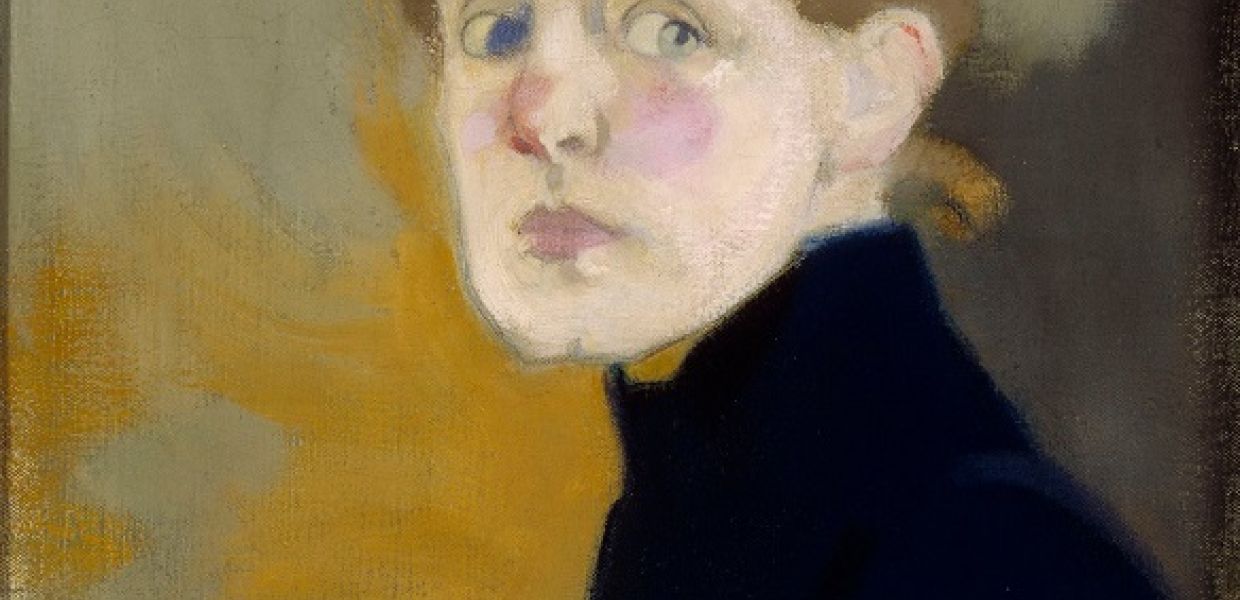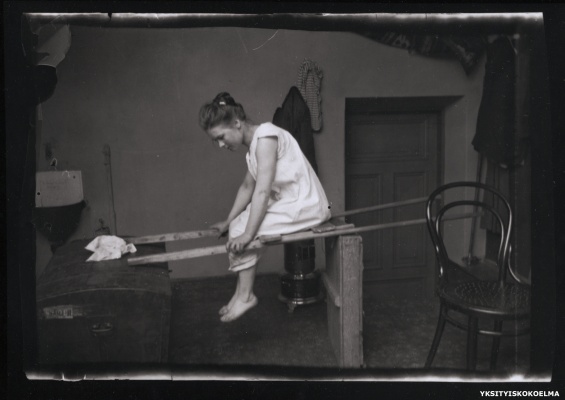Open access insights from the Finnish National Gallery
As part of our series dedicated to museums opening up their collections, we speak to Hanna-Leena Paloposki, Chief Curator and Archive & Library Manager at the Finnish National Gallery

- Title:
- Self-portrait, 1912, by Helene Schjerfbeck
- Institution:
- Finnish National Gallery
You recently spent a two-month professional residency at Europeana. How did this come about?
The Finnish National Gallery (FNG) has always supported international partnerships and, in 2016, it started its own professional residency programme. I submitted a successful application and was keen on learning more about the online availability of cultural heritage collections, open data and international collaboration in the field. My manager Riitta Ojanperä, Director of Collections Management, suggested Europeana: I immediately became excited by the idea. Not being a museum and not having its own collections, I thought that Europeana would give me fresh perspectives on the accessibility of collections on a pan-European scale – and I haven’t been disappointed!
What motivated you to create An Ecstasy of Beauty?
I discussed various project ideas with fellow art historian Douglas McCarthy, Europeana’s Collections Manager (Art & Photography), and we quickly agreed that I would create an online exhibition for Europeana. I wanted to combine artworks and the wonderful archive collections of the Finnish National Gallery with other material available in Europeana. I was also interested in connecting Finnish artists to the international phenomenon of artists’ travels, and decided to focus on the journeys of five Finnish artists beyond Europe. Through these artists’ eyes and the prism of this era, visitors to the online exhibition can go on a journey to Africa, America and the Caucasus, and discover their views about native cultures. I think this topic is also relevant to Europeana’s Migration campaign and to Europeana’s outward-looking, international ethos.

Who was involved in making the exhibition?
Producing an exhibition is always a team effort and An Ecstasy of Beauty was no exception. Douglas was involved from the start: we discussed my ideas and the manuscript throughout the process, and his input was very important.
Exhibition producer Małgorzata Szynkielewska provided helpful feedback on my manuscript and image choices, and she made a crucial contribution to the exhibition. During my stay, upgraded data from the Gallery’s art collections, with higher-quality images, were ingested into Europeana by Pierre-Edouard Barrault, Data ingestion specialist. Pierre worked carefully to optimise the new FNG data and our collaboration gave me valuable insight into the ingestion process.
Who’s your favourite artist in the exhibition?
That would be Hugo Simberg (1873-1917). I have always liked his artworks and they’ve become even more meaningful since I catalogued the archive that his son donated to the Gallery. I’ve had the opportunity to work on Simberg projects such as a major exhibition and publication by the Ateneum Art Museum in 2000, the website dedicated to Simberg’s photographs and letters from the FNG archive, and the publication of his photos under a CC-BY licence. Simberg was a very interesting person, with a close connection to his family. His oeuvre speaks to me – especially the angels, demons and death figures – but An Ecstasy of Beauty shows another side of his work. My favourite exhibition item is the postcard he sent to his sister Elsa from Caucasus in 1899, because it demonstrates how archival material can complement artworks in telling a story.

Emäntä ja piruparka kaksosineen, 1907, Hugo Simberg, Finnish National Gallery
An Ecstasy of Beauty is available in Finnish and English. Why is it important for non-Finnish speakers to learn about these artists?
It was clear from the start that I would write the exhibition in English. The Finnish National Gallery and its associated websites publish a great amount of material in three languages: Finnish, Swedish and English. But Europeana offers a good chance to reach even more audiences and viewers from all around the world, increasing international visibility. It gives us one more way to connect Finnish cultural heritage to that of other European countries, and to showcase it in an excellent and active international context.
Visit The Ecstasy of Beauty exhibition on Europeana
by Camille Tenneson
